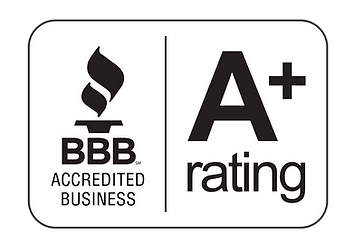Structured Settlements FAQ
Structured Settlements | Frequently Asked Questions
Q. What are structured settlements?
A.
Structured settlement are a core personal injury settlement planning tool that provides customized streams of income, giving income stability to structured settlement payees, with tax advantages. Structured settlement annuities are a flexible funding asset for structured settlements that allows specific needs to be addressed with precision not characteristic of market based investments. For more information about structured settlements and how you get one, please click
here. A structured settlement is commonly referred to by structured settlement brokers and consultants, settlement planners, lawyers, judges, structured settlement annuity issuers and insurance company claims adjusters by the slang word "structure" or in plural "structures".
Q. Can You Be Awarded a Structured Settlement?
A. A structured settlement arises out a negotiation between adverse parties who agree to a compromise. The parties each must agree to settle. In other words "we both agree to lay down our arms and stop the fight if you do this and we do that". You are not awarded a settlement by a judge or jury, or awarded a structured settlement like a sticker for a project well done. If it were an award, it would be called an award, not a settlement. The terms settlement and award are not synonymous. A number of websites associated with the structured settlement secondary market (e.g. annuity.org) are mistaken and surprisingly militant in continuing to promote the fallacy that you can be awarded a structured settlement.
Q. How Does a Structured Attorney Fee affect the Defendant or the Insurer? What are the risks?
A.
Mechanically speaking, a
structured attorney fee using a qualified assignment or non qualified assignment, works similar to a structured settlement for the plaintiff. The release spells out the future payment obligation to the attorney or law firm and when this future payment obligation is assumed by the qualified assignment company or non qualified assignment company for consideration, there is a novation and the defendant's or insurer's liability to make such payments is extinguished.
Q. What is Present Value in relation to a settlement offer at mediation that includes a structured settlement?
A. Present Value ("PV") is a common financial calculation which establishes a value to future periodic payments compared to other investments of similar risk, in today's dollars. The calculation that is used to determine present value is dependent on then interest assumption (discount rate), which could be entirely arbitrary or could be based on an average. A difference of a percentage point could make a major difference in present value, possibly hundreds of thousands of dollars!
Present Value offers are approximations. Should you rely on it to settle your case, without knowing the assumptions, you won't really know what you are settling for. Consequently, an attorney could end up inadvertently violating your contingency fee agreement by taking more than your share of the proceeds.
In Private Letter Rulings 8333035 and 9017011, the IRS ruled that disclosure by the defendant of the existence, cost or present value of an annuity will not cause one to be in constructive receipt of the present value invested in the (structured settlement) annuity. However, you may encounter one of the diminishing number of defense practitioners who will not disclose the cost, even today, because of the mistaken belief that such disclosure will result in constructive receipt. Today, more states are requiring disclosure for consumer protection. Florida, Massachusetts, Minnesota and New York have statutes requiring cost disclosure concurrent with the creation of a structured settlement.
Today it would be highly unlikely that the cost of a structured settlement would not be disclosed. New York, Massachusetts, Florida and Minnesota structured settlement protection laws require cost disclosure concurrent with the creation of a structured settlement. The Florida and Massachusetts structured settlement protection acts further require a Present Value ("PV") disclosure.
Watch John Darer's video podcast on Present Value at the 4structures1 YouTube Channel.
Present Value Should Never Be Used Or Agreed To By Defendants, Insurers or Defense Counsel To Describe the Consideration For A Structured Settlement in a Mediation Agreement or Settlement Agreement . Where present value is used elsewhere, the discount rate and the manner in which present value is calculated should be clearly disclosed. PV can be calculated from the beginning of the year, the end of the year or the midpoint, each with different results.
Q. How Safe Are Structured Settlement Annuities?
A
. The life insurance companies that issue structured settlement annuities are some of the largest and well capitalized insurance companies in the world. Five companies that currently issue structured settlement annuities have been keeping their promises since the 19th Century. Another has been in business for over 100 years. And the Berkshire Hathaway, Inc., the parent of National Indemnity Company, one of youngest of the companies, in business for over 80 years, was again named one of the Top 10 Most Admired Companies in the world by its peers in the 2023 edition, 4th overall in Fortune magazine’s annual survey.
USAA was rated #26 in the 2023 survey. New York
Life Insurance Company, in business since 1849, again made the Top 10 insurance companies in the life & health category as did Prudential Financial, whose Prudential Insurance Company of America, has been in business since the 1875. MetLife is also named to the Top 10 Most Admired Insurers List in Life/Health category for 2023. Watch our video about
Structured Settlement Annuities and also
Visit the
Structured Settlement Annuity Museum
Q. What is the Internal Rate of Return (IRR) in Relation to a Structured Settlement?
A. Internal Rate of Return is a useful financial calculation for comparing different investments. Once you know the IRR, you can compare it to after-tax rates that you might earn by opting for other structured settlement plans, or that you might achieve by taking cash and investing in different taxable or tax-exempt financial instruments. Clearly the IRR is useful to help determine the best value for money while weighing your need for certainty, your available resources, tolerance for the investment risk of the alternatives, needs as to timing and amount of payments and other factors.
Care should be taken by Plaintiffs and counsel to understand how the IRR is calculated in a structured settlement proposal where lifetime payments are being considered, and there is a plaintiff /annuitant with reduced life expectancy, so an effective comparison can be made. From time to time we see a competitor's or an annuity issuer's proposals showing a single high IRR on someone with a very high rated age (severely impaired life expectancy). When we perform our calculations they reveal that the proposal assumes that the annuitant lives a normal life expectancy ("NLE"). This could be unrealistic in and of itself. We are aware that annuity issuers' software calculates the IRR based on different mortality tables. As an example the 2017 Period Life Tables used by the Social Security Administration, gives an unimpaired 40 year male 38.56 years to live (or to age 78.56 ) and a 40 year old female 42.47 years to live (or to age 82.47). Yet the IRR calculator of one annuity issuer that we are aware of had a to age 85 or age 86 life expectancy from which to measure the IRR for a 40 year old male. With a life contingent payout, an increase in the length of the payment period results in a higher IRR.
Despite the possibility that the annuitant may not live to NLE is reflected in the pricing of the structured settlement, the potential of a near term or intermediate term death is often not reflected in the IRR on some proposals. If your broker, or the person in his/her office creating the proposal, is simply transposing the numbers from an annuity issuer, with NLE mortality assumptions in their IRR calculator, the IRR numbers may be inflated and not useful for comparison.
In cases with impaired risk annuitants we suggest running the IRR calculations at various milestones past the structured settlement's period certain through a standard NLE. Doing this should clean up the discrepancy that may exist between proposals of annuity issuers who may use different mortality tables in the IRR calculation tool within their software and also give the plaintiff, counsel and beneficiaries a better frame of reference.
Q. What Do Periods of Low Interest Rates Mean for Structures?
A. Rampant spending by the United States has resulted in inflation and rising interest rates, which make fixed structured settlements decidedly more attractive. Even when interest rates are lower however, the main reason people do structured settlements today is not the interest rates, it’s the ability to provide for the "must haves" through customized payment streams of core foundational income that is safe, secure and guaranteed. Even during periods of lower interest rates there is generally a gap between structured settlement annuities and treasuries as well as corporate bonds of similar credit quality. The tax leverage afforded by a structured settlement still applies. When the economy is slowing or the stock market is volatile, it is a wise allocation of a portion of your settlement recovery. Even in a growing economy those who cannot accept volatility in investment returns or have an absolute need for income will benefit from a structured settlement. Structured settlements offer peace of mind, safety, tax leverage and a competitive rate of return. That being said, there are other structured settlement products introduced during the Pandemic era low interest rate perioid, that address rising interest rate concerns such as Interest Rate Linked Structured Settlements (IRLSS), underwritten by American General Life Insurance Company as well as market based structured settlements and indexed linked structured settlement solutions. There are now a number of options and more are coming later in 2024. Contact us or follow our website and blogs to stay informed.
Q. What Are "Secondary Market Annuities"?
A . The terms "secondary market annuity" or "secondary market annuities" are intellectually dishonest marketing labels used by merchants of factored structured settlement receivables and deceptful settlement planners, which involve the purchase and assignment of structured settlement payment rights or multi-streams originated in the structured settlement secondary market. What merchants call secondary market annuities are not annuities at all. They are factored structured settlement receivables.
If you are considering buying structured settlement receivables:
- You will enter into a Receivables Purchase Agreement
- You will not be paying a premium to an insurance company
- An investment in structured settlement receivables is not the same as buying an annuity or any insurance product no matter what the salesperson says. You will find that many of those who misrepresent structureed settlement receivables as "annuities" do not hold an insurance license. Its easy to verify licensure.
- You may not be able to get out of an investment in structured settlement receivables if your circumstances change.
In addition, there are substantial transactional risks and a lack of statutory protection that is associated with legitimate annuities . Some investors, including retirees have lost all their money and incurred substantial legal fees in an unsuccessful attempt to protect their investment in structured settlement receivables that thet thought were annuities.
In a March 29, 2017 decision in
Greenwald v Caballero-Goehringer , Delaware Superior Court C.A. No. K14C-04-027 JJC. a Delaware Superior Court judge rejected an attempt to portray structured settlement payment rights as an annuity in a minor's prove up hearing, stating. "The proposed "structured settlement" was described in the Third Petition as a structure to be purchased through a third party to be facilitated by a Houston, Texas law firm. The "annuity" proposed by the Petitioner was in fact a "receivable purchase agreement" which involved purchase of the rights of payment of a structured personal injury settlement from a California injured party having nothing to do with this case.
In December 2018, the National Association of Insurance Commissioners (NAIC) opined in its Statutory Issue Paper No. 160 (adopted April 2019) confirmed that an investment in factored structured settlement payment rights, was neither an annuity nor an insurance product. Insurance Companies, which are significant consumers of factored structured settlement payment streams must account for such assets separately from insurance products on their books (which are subject to audit).
The 2017 Revisions to the Life & Health Guaranty Associations Model Act (#520), which has been adopted in 40 states as of July 2023, stiffs investors who acquire structured settlement payment rights (another person's structured settlement payments), providing no protection to such investors in the event of insolvency of the underlying annuity issuer. There is no respite in the event of carrier insolvency if your state is one of the 10 states that have not yet adopted the 2017 Revisions (e.g. New York and California) and later adopts them. The 2017 revisions to the Model Act provides a retroactive application to the changes once adopted by your state. 80% of US states had adopted the 2017 Revisions to the Model Act.
Combining the cash flows from the two fixed income generating asset classes may present an efficient solution for the right claimant, or attorney, who is fully informed about the transactional risks and is willing to accept them, in a low interest rate environment. But it's a highly sophisticated solution that may be worth exploring with extreme caution. It may not be a suitable investment in the best interest of Mom and Pop retirees, minors or incompetents.
Q. Why do females receive less lifetime monthly income from a structured annuity than males of the same age and health status, when the structured settlement is funded with the same amount of money?amount?
A. As an initial matter, there is no difference in pricing except where life contingent payments are being priced. There is plenty of research that shows that that biological females have a longer life expectancy than biological males. Structured settlement annuities are issued by life insurance companies. Since the period over which females are "insured" is statistically longer, it follows that the cost of that "income insurance" is higher. Consequently the income per each dollar of funding is less. The reverse happens with other financial protection products, such as life insurance, where the cost of insurance is less because a female has a statistically lower mortality risk. Insurance pricing for lifetime payments is data driven and gender is not the exclusive element in pricing. For example, the lifetime annuity income generation rate of a male with health impairments may be more costly than a female without health impairments.
Q. What Role Does Gender Play in Structured Settlement Annuity Pricing, where Gender is Different from Gender Assigned at Birth? #LGBTQI2A+
A . When we last surveyed the annuity issuing life insurers in 2023, there was a binary pricing standard for lifetime annuity payment, based on gender assigned at birth. One US state has so-called unisex pricing of life contingent benefits (gender neutral pricing) It is important to recognize that gender is only one of the factors in structured settlement annuity pricing for lifetime benefits. A plaintiff's medical information may help increase the payout of life contingent payments or other options insuring a lifetime of payments, as it would for anyone else. For example, the use of Hormone Replacement Therapy in transition has known side effects . and could be a factor in an increased rated age. Furthermore, pricing for guaranteed lump sum payments and period certain payments is unaffected by gender. We will be publishing a more expansive paper on this issue soon. In the meantime feel free to contact us if you would like to learn more.
Q. "Sandy", a trans female, receives lifetime payments from a structured settlement established when she was a child, well before her transition. Are Sandy's payments going to be adjusted downward based on the gender Sandy now identifies with? #LGBTQI2A+
A. No. Lifetime structured settlement payments will not be increased if a person transitions from female to male. For the same reason, structured settlements will not be decreased if an annuitant transitions from male to female.
Q. What Happens to My Structured Settlement Payments If I Die?
A. Structured settlement payees can name a beneficiary if provided for in the settlement agreement. Typically written notice must be given to the annuity issuer or the qualified assignment company, in proper form, before a designation is effective. Each company has its own form for designation of beneficiary, or change of beneficiary. You can name more than one primary beneficiary and contingent beneficiary. Minors cannot name a beneficiary so it defaults to their Estate until they reach the age of majority, when they are free to designate a beneficiary who they wish. In the event of death prior to the end of any guaranteed/certain period or when there are remaining deferred guaranteed lump sum payments yet to be paid, any remaining structured settlement payments will be made, when due to your named beneficiaries or your Estate, as applicable.
Pro Tip : It is a good idea to periodically review your beneficiary designations to be sure it accurately reflects your current wishes.
Important: While structured settlement payments to a named beneficiary bypass probate, the present value of any yet to be received certain structured settlement payments, or guaranteed lump sum structured settlement payments, may be part of the calculation of the decedent's gross estate used to determine if there is any estate tax liability.
Read Structured Settlement Tax Benefits
A commutation rider is as an option however, that will serve to commute remaining guaranteed structured settlement payments to a lump sum upon death. A structured settlement commutation rider is useful where the structured settlement is paying into a Special Needs Trust (in some jurisdictions the commutation rider may even be mandatory in order to receive Medicaid approval), where liquidity is needed to pay estate taxes, or in circumstances where it can be anticipated that beneficiaries would not benefit from an income tax free payment stream. A commutation rider
must be set up at the time of settlement is finalized . The method of calculation of present value varies by annuity issuer. Some use the cost of an annuity which, as of the date of death and based on the annuity issuer's then current rates, could fund the remaining certain or guaranteed payments. Others use a discount factor based on a published bond index.
Pro-Tip: Read about Berkshire Hathaway's inclusive and responsive commutation rider language . Indpendent Life Insurance company also has inclusive commutation rider language.
Read John Darer's blog "
Tax on Structured Settlement Payments at Death? "
Q. Can you do a structured settlement in a bad faith case where the plaintiff has suffered a physical injury?
A. In Private Letter Ruling 200903073 released on January 18, 2009, the Internal Revenue Service relying on the "origin of the claim" doctrine, determined that amounts received by an accident victim from the defendant's insurance company as part of an assignment agreement and a settlement agreement are excluded from gross income to the extent they are attributable to medical expenses, pain and suffering, and lost earnings. An exclusion from income under IRC 104(a)(1) or IRC 104(a)(2) is essential in order for there to be a qualified assignment (whether directly from the Defendant or Insurer, or from a qualified settlement fund under IRC 130(c)(2)(D). Click here to review a copy of the IRS Private Letter Ruling 200903073.
Q. How does a structured settlement annuity compete in the current interest rate environment?
A. The primary reason people take structures is to provide a foundation of stable income. Recent publications contend that longevity risk, the concern about outliving one's assets, which has always been the top concern of seniors, is also a concern of increasing numbers of people over age 45.
Structured settlement annuity yields remain highly competitive to other alternatives at all durations. Short term structures may even surprise you. Even if you don't need lifetime income, a fixed income investment may be part of, or may have been recommended to be part of, your portfolio. A structured settlement can be established to model the payment flows of a fixed rate bond held to maturity, in which the issuer of a bond paying income to bondholder until maturity and then, the bondholder receives back the amount invested or principal, In this case, the structured settlement annuity issuer pays the income and then returns the principal as a planned deferred lump sum payment. Structured settlement payments are income tax exempt where the structured settlement payments represent damages for personal physical injury, physical sickness, wrongful death, wrongful imprisonment and workers compensation cases.
But for those who want more growth potential, who have discretionary settlement dollars and are willing to accept some market risk, there are indexed linked, interest linked, and market based structured settlements to speak about.
Use the 4structures®
taxable equivalent yield chart to compare bond rates to the internal rate of return of a structured settlement, or the component cash flows within a structured settlement. You can also use the chart to calculate the net after tax yield of a taxable investment and compare it to the internal rates of return of a structured settlement.
Consider that the Trump era tax cuts are set to expire December 31, 2024. Consider State and Federal government deficits and the possibiliity of future tax increases. Tax increases make the stuctured settlement payments more valuable to payees.
Lifetime structured annuity payments, which may incorporate rated age pricing, may have even higher yields than bond simulation or fixed period certain structures. Unlike bond payments, structured annuity payments can be customized. For example, while bond payments are traditionally paid on a semi-annual basis, the structured annuity payments could be paid monthly, quarterly, semi-annually, annually or even bi-weekly! They can also be immediate or deferred and have increasing payments.
Q. Is it Necessary For the Plaintiff to Structure in Order For Lawyers or Law Firms to Defer or Structure Their Fees?
A. No, the attorney or law firm may structure their fees or benefit from another form of attorney fee deferral, even if the plaintiff does not structure.
Last updated March 24, 2024
This web site is not endorsed by, directly affiliated with, maintained, authorized, or sponsored by any insurance or other company referenced herein. All products, services and company names are the registered trademarks of their original owners. The use of any trade name or trademark is for identification and reference purposes only and does not imply any association, sponsorship or endorsement between the trademark holder and the operators of this web site.
#structuredsettlementfaq #structuredsettlementquestions #faqstructuredsettlements #asktheexpert #askjohndarer #askastructuredsettlementexpert #rateofreturnstructuredsettlement #structuredsettlementfaqs #structuredsettlementguru, #genderbasedpricing

Structured Settlement Questions?
Have a question about structured
settlements? Ask John Darer at 888-325-8640
Or send us a message and we’ll be in touch.
We will get back to you as soon as possible
Please try again later
4structures.com, LLC
The Structured Settlements and Settlement Planning Company
43 Harbor Drive, #309 Stamford, CT 06902 USA
888-325-8640
646-849-1588
New York City (Manhattan, Bronx, Brooklyn, Queens, Staten Island), Westchester(NY), Nassau County (NY) , Suffolk County on Long Island (NY), Albany County (NY), Oswego County (NY), Steuben County (NY), Broome County (NY), Onondaga County (NY), Monroe County (NY), Fairfield County (CT), New Haven County (CT), Hartford County (CT) New London County (CT), Tolland County (CT), Litchfield (CT), Middlesex (CT) , Bergen County (NJ), Middlesex County (NJ), Ocean County (NJ)
Structured Settlement Experts and Settlement Planning Consultants for settlements from claims or lawsuits arising out of Aviation accidents, Medical Malpractice, settlements involving Serious Personal Injury, Wrongful Death, Wrongful Incarceration, Employment, Civil Rights, Discrimination of any type, Auto accidents, Motorcycle accidents, Maritime accidents, Workers' Compensation, Product Liability, Real Estate Liability, Construction Defect claims or lawsuits, Landlord/Tenant,
Property, Attorney Fee Deferrals, Funding Agreements, Structured Installment Sales, Environmental Liability and Commercial Dispute settlements.
Structured settlements and structured settlement brokerage, settlement planning, Sudden Money®, financial transitionist, funding agreements and insurance related services provided by 4structures.com LLC.
Financial Advisory Services provided through Groove Financial Advisors , LLC, and its service partners.
Fiduciary services, including the custody and administration of trusts provided via service partners.
Securities and Insurance Products are NOT Insured by the FDIC, nor by any other Federal or State Government Agency, are NOT a Deposit of and are NOT Guaranteed by a Bank or any Bank Affiliate, and securities MAY lose value.
4structures (USPTO Reg. 4640532) , 4structures.com (USPTO Reg. 4640531) , We Know Structured Settlements (USPTO Reg. 3089738),
Because Certain Sells (USPTO Reg. 6237309) and We Know Structured Sales (USPTO Reg. 3490489), are Registered Trademarks of 4structures.com LLC.
John Darer is a Registered Trademark of John Darer (USPTO Reg. 4674907)
John Darer California insurance license 0761076
4structures.com LLC CA license OF19785 d/b/a 4structures Settlement Insurance Agency






